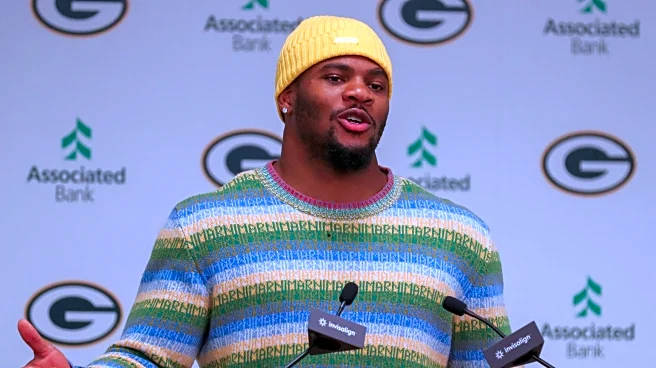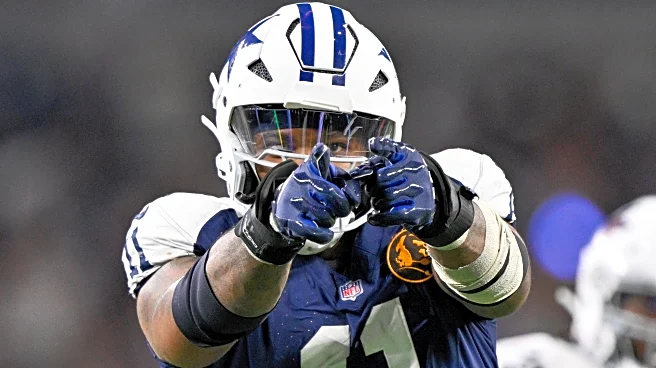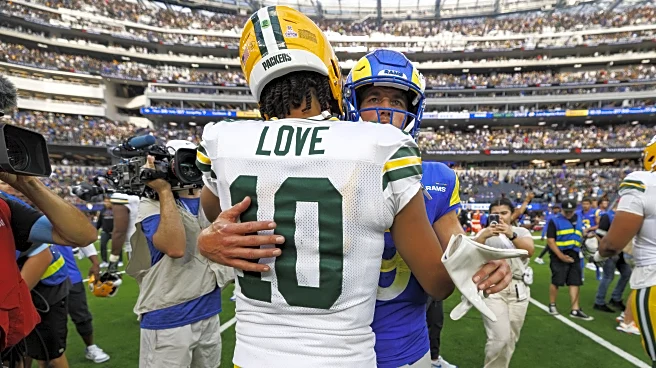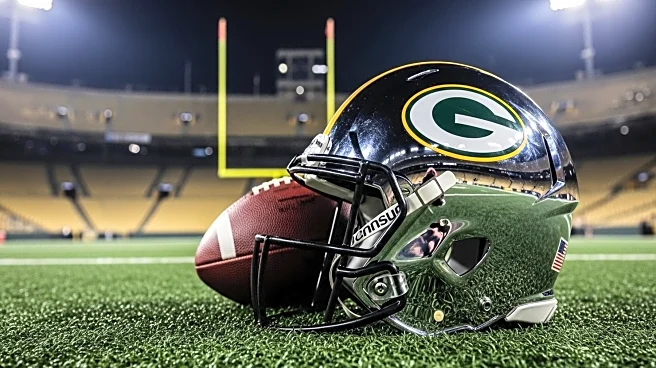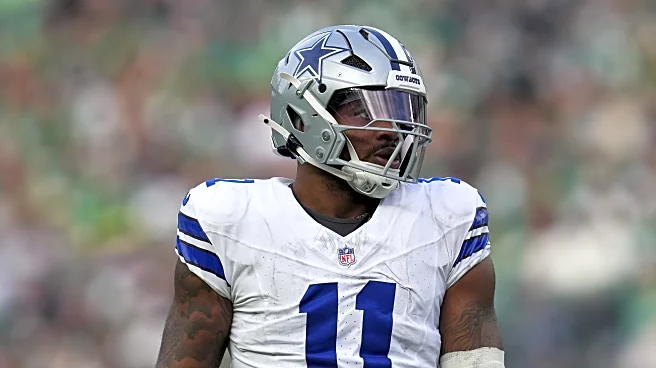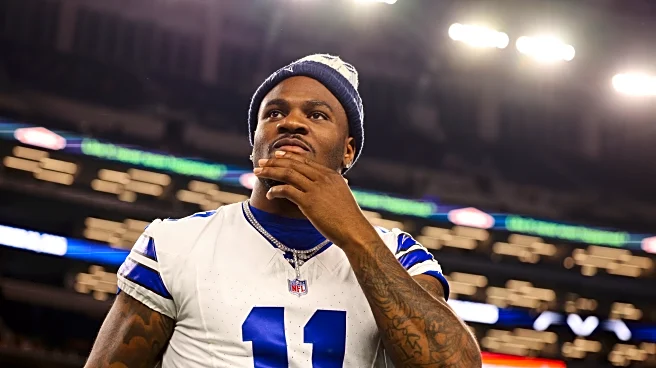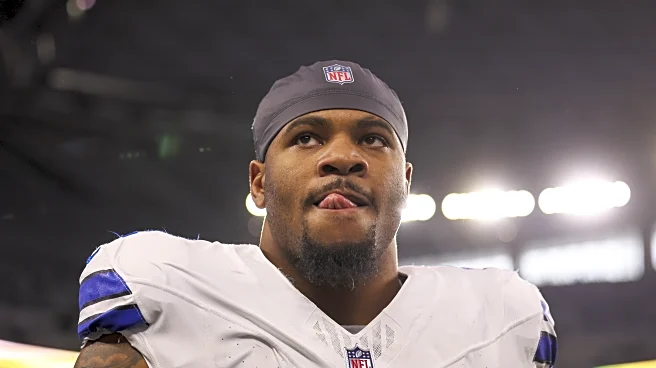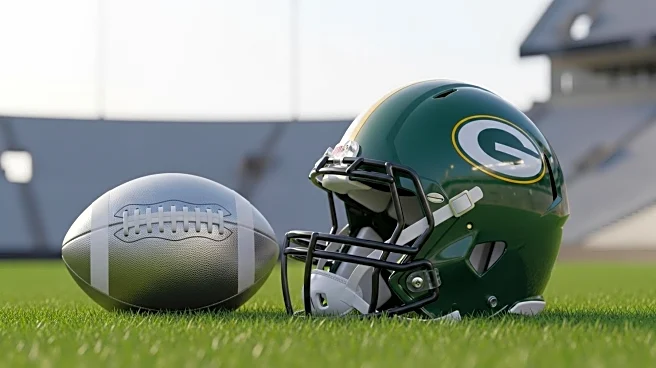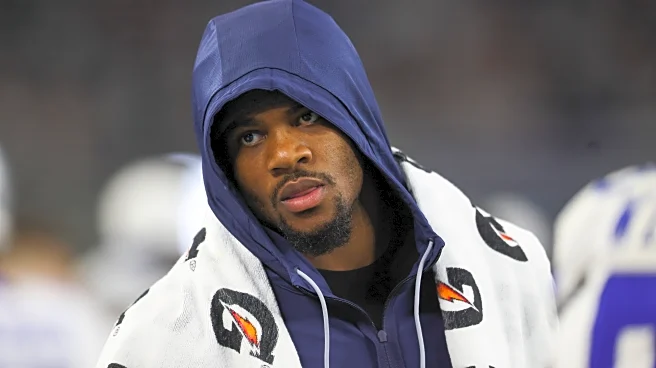
Alright, now that we’ve finally wrapped our heads around that Micah Parsons is actually a Green Bay Packer, let’s look at his four-year contract extensions with the team, which really acts as a five-year deal because he was already under contract for one season before his trade. For all intents and purposes, this is a new five-year deal, and Parsons’ fifth-year option from his time with the Dallas Cowboys was shredded.
If you want a quick look at the full layout of the deal, here is the table from
Spotrac:

Now let’s break down the nitty-gritty here.
Signing bonus
The Packers are known for handing out big signing bonuses, in part because that’s usually the only guaranteed money that they give players on extensions, beyond their first-year salary. In truth, though, Green Bay probably could have gone bigger than the $44 million that they paid to Parsons.
While quarterback Jordan Love has the second-largest signing bonus in the league, Zach Tom has the largest signing bonus among non-Pro Bowl offensive linemen in the NFL and safety Xavier McKinney was only recently surpassed by Kyle Hamilton at the top of his position, Nick Bosa’s $50 million signing bonus on his $34 million average per year contract extension from 2023 actually ranks ahead of Parsons’ $44 million bonus on his $46.5 million average per year deal.
There are other guarantees in this contract, highly unusual for the Packers organization outside of quarterback deals, which is probably one reason why the team probably didn’t feel the need to up the signing bonus number. Of the $45.17 million Parsons will make this year, 97 percent of that will be coming by way of his signing bonus.
Salary
If you just look at the raw salary in Parsons’ deal, he’s going to make $1.17 million in 2025, $2.39 million in 2026, $2.11 million in 2027, $40.55 million in 2028 and $43.55 million in 2029. Salary is how Parsons will make money during the season, as these are game checks.
But this doesn’t mean that Parsons won’t be making big money until his salary jumps massively in 2028. Instead, he has two big option bonuses that will kick in for the 2026 and 2027 seasons.
In 2026, that bonus is $38 million. That is already fully guaranteed. In 2027, his bonus will cost $34.44 million and is also guaranteed at signing. These bonuses essentially make up for the low salaries in 2026 and 2027, but put the Packers in a position where they have to declare early on in the offseason about whether or not they’ll be holding onto Parsons for these years, as option bonuses are generally paid out in March near the start of free agency.
What’s interesting is that this sort of gives the Packers some flexibility in the trade market, at least more than if they paid a bigger signing bonus, if this move doesn’t pan out in Green Bay. Is $120 million fully guaranteed at signing? Yes, but the only dead cap currently associated with Parsons’ deal, if they go down the trade route, would be his $44 million signing bonus — which is prorated at $8.8 million per year on the salary cap.
This is all to say: That $44 million dead cap drops by $8.8 million each year that he’s on the team. So in 2026, the dead cap price would be $35.2 million. On the relative scale of mega deals, this is a pretty easy out. If they keep Parsons beyond his 2026 option bonus, though, the Packers are no longer dipping their toe in the water. They’ll be waist-deep and locked into paying Parsons until probably 2029, which we’ll get into detail about later.
Other payments
Beyond Parsons’ signing bonus, option bonuses and salaries, there are a few other aspects of his contract. Every game that he’s active for, he receives a $11,764 roster bonus, a year-long total of $200,000 for each of his five seasons. He also gets a $250,000 workout bonus for showing up to a certain number of voluntary offseason workouts (OTAs) each year.
In 2029, and 2029 only, he has a $1 million roster bonus, which will be paid out if he’s on the team’s 90-man offseason roster in the final year of this deal.
So far, his signing bonus, 2025 salary, 2026 salary and option bonus and 2027 option bonus are fully guaranteed. He has rolling guarantees in his deal, too, in 2027 and 2028. This means that his 2028 salary ($40.55 million) will be guaranteed if he’s on the roster in March of 2027, etc.
Cash flow
From a pure cash flow perspective, Parsons will be making between $38 million and $45.17 million in cash per year with the Packers. It peaks in 2025 with $45.17 million, followed by $40.84 million, $38 million, $41 million and finally $45 million in 2029.
Cap hits…on paper
As far as the cap hits go, they’re well below his average salary for the first three seasons. In 2025, he’ll count about $10 million against the cap. Then it’ll be $19.24 million in 2026 and $26.85 million in 2027. In total, the Packers will have paid him $124 million over those three seasons and will have only accounted for $56.09 million of that (45 percent) on their salary cap for those seasons.
An interesting part of his contract is that there are two void years added to the end of the five years, which will help the team spread the option bonuses of 2026 ($38 million) and 2027 ($34.44 million) over five seasons of cap accounting. So from 2026 to 2030, the Packers will be paying $7.6 million on the cap each season for Parsons’ $38 million 2026 option bonus. From 2027 to 2031, the Packers will be paying $6.89 million on the cap each season for Parsons’ $34.44 million 2027 option bonus.
The dead cap, the option bonuses and void years
Because of the unique structure of this deal, there are really two outs for the Packers if stuff starts to turn south.
The first opportunity they have to get out of the deal is actually the 2026 offseason, before his $38 million option bonus is paid. Because the only dead money on the deal, in a trade, would be the prorated $44 million signing bonus, the Packers can basically get out after paying him $45 million for the 2025 season and would only have to eat $35.2 million.
Of course, it would also take a trade suitor to be willing to take him on.
If Green Bay is willing to go down the path of Parsons making the 2026 roster — which is a near lock to happen — then he’s basically going to be locked down by the Packers through at least the 2027 season.
Because of the roster bonuses (which will allow the cap accounting to be spread over five years) and the void years tagged at the end of the deal (ensuring that there will be five years to spread those 2026 and 2027 roster bonuses over), this sort of functions as a three-year contract that will pay Parsons around $124 million cash ($41.33 million per year).
Why a three-year deal? Because in 2028 Parsons’ cap hit balloons to $64.29 million, more than his 2025-2027 cap hits combined ($56.02). At that point, the Packers will probably renegotiate his deal. In the 2028 season, he’ll have a dead cap of $67.95 million if the team wants to move on from him, so it’ll be unlikely that the team will trade him until at least 2029, as long as they choose to keep him through his 2026 roster bonus.
The amount of cap space they will have pushed forward by that point will simply be too much to warrant any movement. Even if the Packers have the stomach to have Parsons to play out his $63.84 million and $66.84 million cap hits in 2028 and 2029 (the highest non-quarterback cap hit in the league right now is $38.15 million this year), then they’re still on the hook for $21.37 million in cash accounting on the Parsons contract in 2030, a year in which he’ll no longer be under contract with the team.
In truth, the Packers will probably have to convert at least some of that 2028 salary ($40.55 million) into a signing bonus to lower his cap hit down from $63.84 million. So you can go ahead and assume that the credit card debt in 2030 will be much higher than the $21.37 million that will be on the books if he plays out his full deal as is.
Make no mistake: The Packers are manufacturing a title window. Their plan is to put Parsons on salary cap credit cards. Eventually, they will come due. My best guess is this isn’t going to happen over the next three years, though, and might not come until 2030. By that point, though, the NFL will have a new media rights deal, which is expected to balloon cap numbers beginning with the 2030 season, right around when Green Bay probably has to start really paying off this debt.
The Super Bowl champion Philadelphia Eagles continue to spend money while they’re in cap debt, because they’re making the bet that pushing cap hits into the future will actually make the deals they’re signing more efficient. If $28 million is 10 percent of the cap now, and the league is increasing the salary cap at about a $25 million pace BEFORE the next huge set of television deals, then maybe that $28 million might be only 5 percent in 2030. If that’s the direction you think the league is moving in, why not just kick the can down the road and let cap inflation cut the cap cost (from a percentage standpoint) of these payments by half?
That’s the road that Eagles GM Howie Roseman is on. The Parsons deal hints that Packers GM Brian Gutekunst might be thinking along the same lines now that Green Bay is fully out of the cap debt they built up around their final runs with Aaron Rodgers under center.
